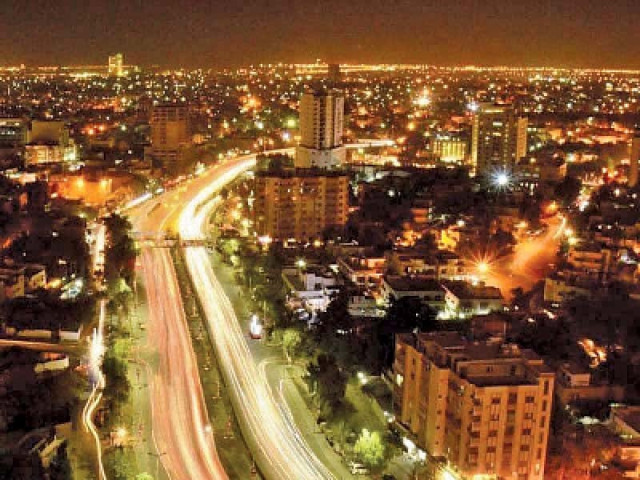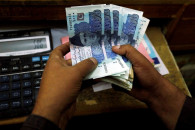Climate change to hit 20% of GDP
World Bank says Pakistan needs $348b to stop climate-induced disasters

Pakistan needs a mammoth $348 billion in eight years – 800% more than the current annual budget – to stop climate-induced disasters. Climate change, however, has the potential to shave off one-fifth of the economy if no action is taken now, says a new report released by the World Bank.
The World Bank Group, on Thursday, released the Country Climate and Development Report (CCDR), which also showed that against the huge $348 billion requirements for the 2023-30 period, the total public and private financing available was a mere $48 billion. This has projected a $300 billion gap, which Pakistan by all means cannot meet.
“The total investment needs for a comprehensive response to Pakistan’s climate and development challenges, between 2023 and 2030, amount to around $348 billion, or 10.7% of cumulative GDP for the same period,” states the report.
Pakistan needs $152 billion for adaptation and resilience, and $196 billion for deep decarbonisation. This figure is enormous in comparison to the historic average annual development budget at the federal and provincial levels, and currently available finance.
The World Bank said that the combined risks of extreme climate-related events, environmental degradation, and air pollution are projected to reduce Pakistan’s GDP by at least 18 to 20% by 2050. This will stall progress on economic development and poverty reduction, it added.
The World Bank estimated that Pakistan needs $86 billion for disaster preparation and response, $55 billion for universal water and sanitation, $85 billion for the supply of low-carbon electricity, another $31 billion to phase out coal-based powerplants and $57 billion for transport decarbonisation.
For the modernisation of agriculture, the bank estimated $4 billion and another $10 billion for environment-friendly industrial development.
However, these requirements seem gigantic for a country that spends two-thirds of its annual budget on debt servicing and building up its defence forces, implying that Pakistan may never be able to arrange this sum, not even a fraction of it.
The report underlined that, in 2022, Pakistan endured devastating droughts and floods that destroyed assets, lives, and livelihoods on a massive scale. First, a severe heatwave, previously a 1-in-a 1000-year event, saw temperatures continuously rise above 45°C, resulting in crop losses, power outages, and forest fires.
Then the floods that, according to the Post-Disaster Needs Assessment (PDNA), caused $30.2 billion in losses and $16.3 billion in estimated needs for rehabilitation and resilient reconstruction. The total damage caused by the super floods is equivalent to 4.8% of the GDP.
Available financing
World Bank said that the level of funding in recent years suggests that the current financing composition available over the next decade can be estimated to be around $39 billion from public finance and $9 billion from public-private partnerships for infrastructure projects.
The Washington-based lender stated that “Pakistan urgently needs to accelerate the commissioning of renewable energy capacity in the power sector to reduce the overall cost of generation and improve energy security”.
It said that the latest approved version of the IGCEP (2021-2030) shows that renewable energy is now the lowest-cost generation option, even before consideration of energy security and environmental externalities.
“There may also be justification for early retirement of existing fossil fuel capacity, especially older plants operating at low efficiency, and this may be a good candidate for climate finance support”.
The World Bank said that although Pakistan was calling for additional international financing, “the government is encouraged to explore the repurposing of subsidies in the energy, agriculture and water sectors and improving tax and tariff collection”. If fully implemented the combined revenue of these measures could result in around $10 billion per year, according to the lender.
“The recent flooding and humanitarian crisis provide a wake-up call for urgent action to prevent further devastation to the people of Pakistan and its economy due to climate change,” said World Bank Vice President for South Asia Martin Raiser. According to Raiser, accelerated climate actions can protect the economy from shocks and secure more sustainable and inclusive growth in Pakistan.
Pakistan’s GDP could shrink by 20% by 2050 due to climate-induced changes, estimated the World Bank.
The magnitude of damages varies considerably across the three climate scenarios considered. In the optimistic scenario, the GDP is projected to fall by 4.5% to 6.5%. In the pessimistic scenario, GDP is projected to fall by 7% to 9% by 2050. Household poverty is expected to decline over time, but even a 9% decline in GDP by 2050 is enough to stall poverty reduction, with disproportionate impacts on rural households, it added.
Published in The Express Tribune, November 11th, 2022.
Like Business on Facebook, follow @TribuneBiz on Twitter to stay informed and join in the conversation.



















COMMENTS
Comments are moderated and generally will be posted if they are on-topic and not abusive.
For more information, please see our Comments FAQ